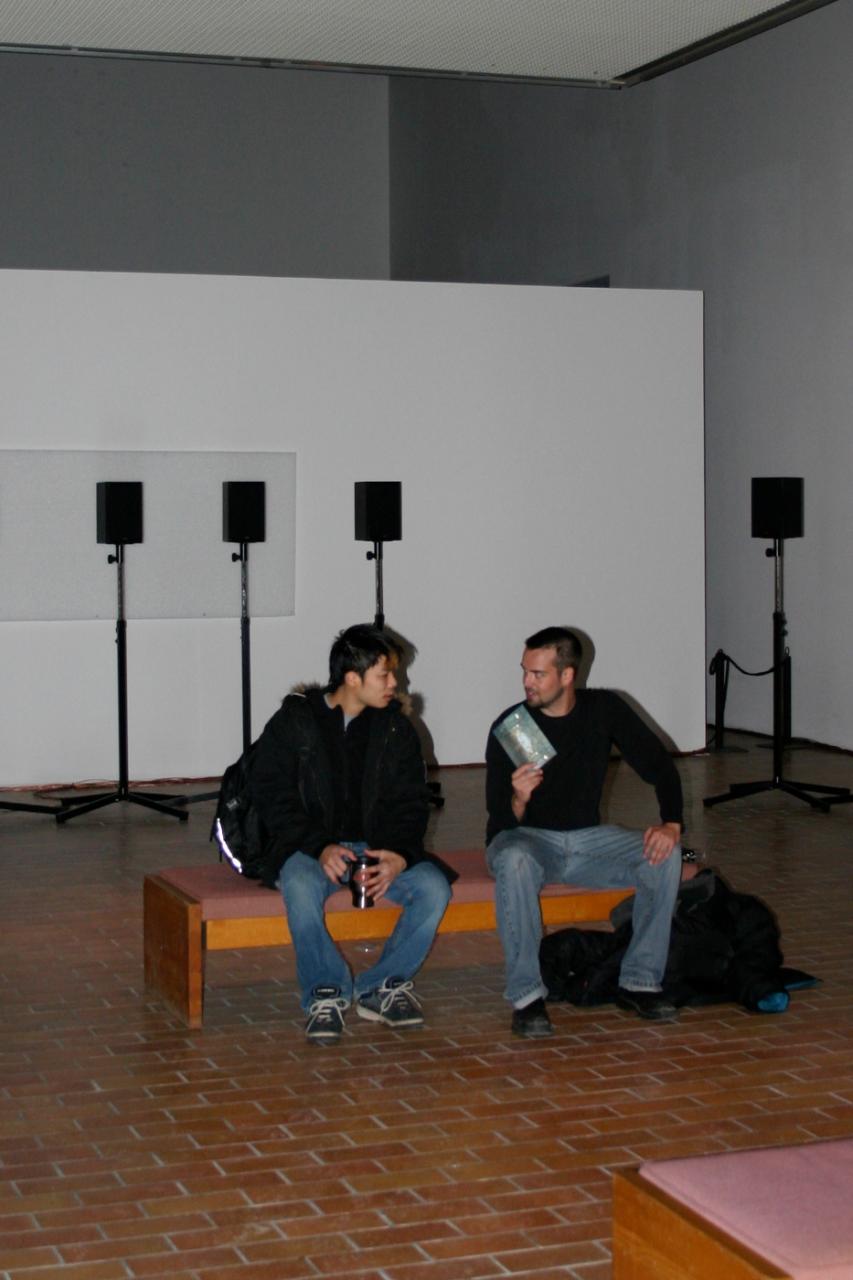
Exhibition
11 Jan 2007 - 28 Mar 2007
OPENING RECEPTION
Thursday January 11, 2007
5 – 8 PM
Forty Part Motet
Janet Cardiff
Forty-Part Motet is a sound sculpture by former Lethbridge, Alberta artist Janet Cardiff. It is Cardiff's reworking and transposing of Spem in Alimn by Thomas Tallis, a I6th-Century English composer, who is said to have produced one of the most complex pieces of polyphonic choral music ever composed. Tallis originally composed the forty-part motet in a very spatial manner, designed to be sung in a chapel with eight alcoves for eight different choirs, so the voices would move around the audience in the central core.
Forty voices from the Salisbury Cathedral Choir were each recorded separately at Salisbury Cathedral as part of an annual music festival. The individual voices are synchronized and played back through forty speakers to be positioned around the Illingworth Kerr Gallery. The affect of Forty-Part Motet on visitors is deeply moving, earning it a level of popularity rarely encountered in contemporary art.
The IKG would like to extend its appreciation to the National Gallery of Canada for touring Forty-Part Motet and providing onsite technical assistance in Calgary. Thank you to Pierre Theberge, Karen Colby-Stothart, Kristin Rothschild and Marc Paradis.
Janet Cardiff is internationally known for her audio walks in which found and engineered sound recordings are montaged in a highly sculptural presentation that often includes the artist's distinctive voice. Audiences engage the audio walks by using playback systems (e.g. a Walkman) and headphones. In the case of Forty-Part Motet, sound fills the gallery space and viewers are free to walk around and between the speakers. The three-dimensional quality of the sound and its ability to move audiences is unparalleled and cannot be easily duplicated on a home stereo or with a live choir. The artist adds: "Most people experience Tallis' piece of music now in their living rooms in front of only two speakers. Even in a live concert the audience is separated from the individual voices. Only the performers are able to hear the person standing next to them singing a different harmony. I wanted to be able to climb inside the music."
Cardiff is one of a growing number of Canadian artists enjoying an international career. She represented Canada, along with George Bures Miller at the 2001 Venice Biennial, producing the groundbreaking The Paradise Institute with the support of Plug In ICA, Winnipeg. Her work is in many public and private collections worldwide. Cardiff currently divides her time between Berlin and a studio near Enderby, BC.